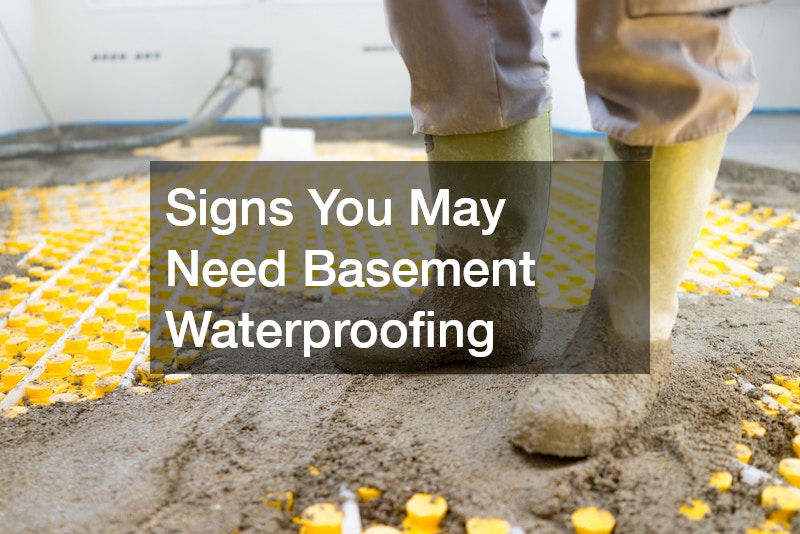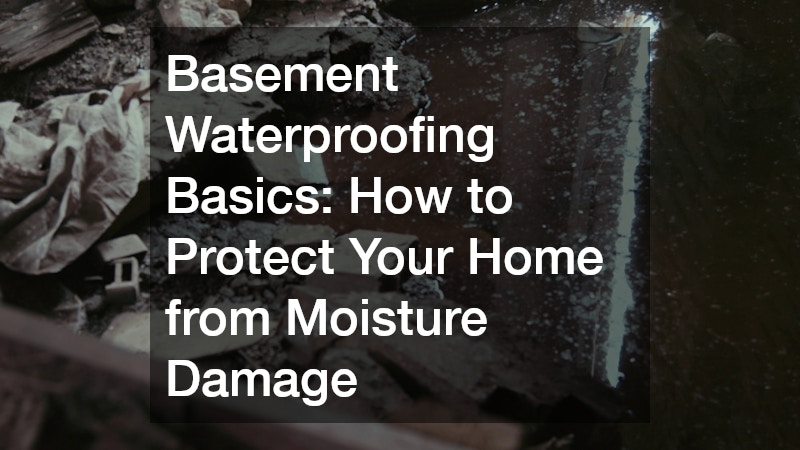A basement can be one of the most useful areas of a home—whether it’s used for storage, a workshop, or even a finished living space. However, it’s also one of the most vulnerable parts of the house when it comes to moisture problems. Without proper protection, water infiltration can lead to mold, structural damage, and unhealthy indoor air. Understanding the basics of basement waterproofing can help you safeguard your property and maintain a safe, dry environment year-round.
Why Basement Waterproofing Matters
Water can enter a basement in many ways—through cracks in the foundation, seepage through porous concrete, or even from high humidity levels. Over time, this moisture can cause a range of problems, from peeling paint and musty odors to weakened walls and flooring.
Basement waterproofing is the process of preventing water from entering or accumulating in your basement. It not only protects the integrity of your home’s foundation but also ensures the air quality and comfort inside the home remain high. When done correctly, waterproofing can extend the life of your property and prevent costly repairs in the future.
Common Causes of Basement Moisture
Before diving into waterproofing solutions, it’s essential to understand the typical sources of water in basements.
-
Poor Drainage Around the Home – If your yard slopes toward your home rather than away from it, water runoff can collect near the foundation.
-
Foundation Cracks – Over time, shifting soil and temperature changes can cause small cracks in concrete walls or floors, creating entry points for water.
-
Hydrostatic Pressure – When the soil around your home becomes saturated, the water creates pressure against your basement walls, forcing moisture through even the smallest openings.
-
Faulty Gutters and Downspouts – If gutters are clogged or downspouts are too short, rainwater can pool around the foundation, leading to seepage.
-
High Humidity – Even without visible leaks, a damp environment can develop from condensation on walls and pipes.
Recognizing these causes can help you determine which basement waterproofing strategies are most suitable for your situation.
Interior vs. Exterior Waterproofing
Waterproofing methods can generally be divided into two categories: interior and exterior solutions.
Interior Waterproofing involves addressing water that has already made its way inside or preventing it from causing damage once there. Common techniques include:
-
Sealing cracks with hydraulic cement or waterproof coatings.
-
Installing interior drainage systems that channel water to a sump pump.
-
Using vapor barriers to limit moisture from the air.
Exterior Waterproofing focuses on preventing water from entering in the first place. This typically involves:
-
Excavating around the foundation to apply waterproof membranes or coatings.
-
Installing or repairing exterior drainage systems such as French drains.
-
Improving soil grading to direct water away from the home.
While interior solutions can be less disruptive, exterior waterproofing offers more comprehensive protection by tackling the problem at its source.
Key Steps in the Basement Waterproofing Process
-
Inspection and Assessment – A thorough inspection identifies where water is entering, the extent of the problem, and whether it’s caused by drainage, cracks, or humidity.
-
Repairing Cracks and Openings – All visible foundation cracks should be sealed with appropriate materials to stop water intrusion.
-
Improving Drainage – This may involve extending downspouts, adding gutters, or regrading the soil to move water away from the foundation.
-
Installing a Sump Pump System – A sump pump collects water from inside and pumps it away from the house, preventing pooling or flooding.
-
Applying Waterproof Coatings or Membranes – Specialized coatings create a barrier on basement walls and floors, keeping moisture from passing through.
-
Controlling Humidity – Using dehumidifiers and proper ventilation helps maintain a dry environment.
Preventive Maintenance for Long-Term Protection
Even after a successful waterproofing project, ongoing maintenance is essential. Check your gutters and downspouts regularly, keep the soil graded away from your foundation, and inspect your basement for signs of dampness after heavy rain. Small issues can be fixed quickly before they turn into bigger problems.
If you have a sump pump, test it periodically to ensure it’s working correctly—especially before the rainy season. Keeping the pump clean and free of debris will help it operate efficiently when needed most.
Signs You May Need Basement Waterproofing
It’s not always obvious when your basement has a moisture problem. Here are some warning signs to watch for:
-
Persistent musty odor.
-
Efflorescence—a white, chalky residue on walls.
-
Peeling paint or bubbling wall coverings.
-
Visible mold or mildew growth.
-
Water stains or damp patches on floors or walls.
If you notice any of these issues, it’s best to address them as soon as possible to prevent further damage.
The Benefits of a Dry Basement
A waterproofed basement offers more than just protection from water damage—it adds comfort, safety, and value to your home. Benefits include:
-
Improved Air Quality – Reduced mold and mildew mean fewer allergens in the home.
-
Increased Usable Space – A dry basement can be finished or used for storage without worry.
-
Stronger Foundation – Less water pressure on the foundation helps maintain structural integrity.
-
Peace of Mind – Knowing your home is protected allows you to focus on enjoying your living space.
If your basement shows signs of water damage, don’t wait for the problem to get worse—take action now to protect your home. A well-planned basement waterproofing strategy is one of the best investments you can make for the long-term health and safety of your property.

